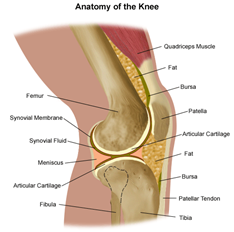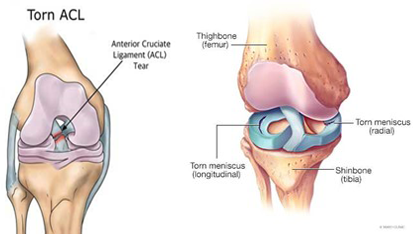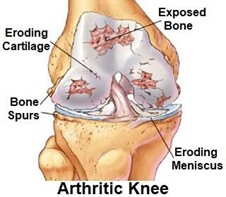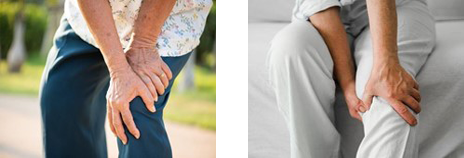Causes of Knee Pain, Treatment Options & Prevention
Knee pain can severely impact the way we go about our daily lives. Daily activities such as walking, running, or sitting down can be challenging due to severe pain. There are many ways to manage knee pain; this includes conservative as well as surgical techniques. Accurate diagnosis and prompt treatment are important to prevent escalation of simple injuries into complex ones.
The common causes of knee pain


Runner’s knee is a common knee injury experiences by athletes and non-athletes alike. It presents as an anterior knee pain due to excessive pressure between the patella (kneecap) and the femur bone (patella-femoral joint). The cartilage covering the patella-femoral joint may also be worn out. Associated inflammation of the patella tendon and the bursa (pre-patella bursitis, supra-patella bursitis) also contribute to knee pain. The causes of runner’s knee include weakness of the quadriceps muscles, poor running technique and imbalances with your foot (flat feet). Your orthopaedic surgeon and physiotherapist will be able to manage your symptoms and guide you back to your active lifestyle with appropriate care and treatment.
Knee arthritis is a degenerative condition where the protective cartilage covering our knee joints are worn out and no longer provide the smooth surface for our joints to move. Patients start to develop a painful grinding sensation in their knees which hamper their daily function. Some even start to develop deformities of their legs such as bow-leggedness and knock knees. Millions of people around the world are affected by knee arthritis, impacting their basic quality of life and happiness.

Associated symptoms of knee pain
Knee pain and its associated inconveniences can creep into our daily lives. Many patients find themselves limping or even waddling when they walk to compensate for the crippling knee pain. This can decrease productivity and increased energy expenditure when walking.

Most sports-related injuries lead to knee pain, swelling and stiffness. A common method to manage these symptoms include rest, ice, compression and elevation (RICE). If these easy methods of managing knee injuries fail to improve your symptoms, you are advised to seek professional medical help.
ACL ruptures are frequently encountered in pivoting sports. Athletes may experience a sensation or even hear a ‘pop’ when they tear their ACL. This is swiftly followed by knee pain and swelling. It is important to ice the knee when this happens. Your orthopaedic surgeon will carefully examine your knee and organise an MRI scan to determine the extent of your injury. Our physiotherapist will work on your quadriceps muscles to ensure they do not weaken with the injury. Professional help is often necessary with ACL ruptures to facilitate a timely return to sports.
Knee injury and arthritis prevention
Dynamic stretching such as moving your shoulder, back and knees before exercise is just as important and contributes to your warm-up. Static stretching such as touching your toes to release your hamstring muscles should only be done after your exercise. It helps prevent delayed onset muscle soreness (DOMS) and recovery.
One should always be prepared in terms of sporting equipment and clothing when doing a sport. It helps you enjoy your sport safely and prevent injuries. Pre-sports training and biomechanics is also important in sports such as golf and tennis where repetition of a bad swing can lead to muscle and joint injuries.
The stress on your knees is proportional to your body weight. Each time you lose 1kg, it reduces the stress on your knees by 4kg. Current international guidelines actively promote an active lifestyle, aerobic exercises and healthy weight loss to combat knee pain from arthritis.
You know your body best. It is important to know your limits and abilities to prevent injuries. Do not be pressured by those around you who may be fitter, stronger or faster. Exercise safely towards your personal goals.
Treatment options
Meniscal tears do not heal naturally due to its poor blood supply. Depending on the location of these tears, your orthopaedic surgeon may repair them or debride (smoothen its edges) them through a keyhole (arthroscopic) procedure. This would help preserve the integrity of your knee in the long run.
ACL ruptures are reconstructed through an arthroscopic procedure. The new ACL graft is often the patient’s own hamstrings which are known to regenerate after a few years. Patients tend to return to sports one year after their surgery. This is to allow the graft to mature and prevent a rupture of the new ACL graft.
Patients with knee arthritis may require a knee replacement procedure. There are three compartments to the knee and only the worn-out compartment is replaced. In patients who are 40-55 years old with arthritis in only one compartment of their knee, a partial knee replacement (UKA) may improve their pain and overall function. It will allow them to return to work and enjoy an active lifestyle. Some may require a revision to a full knee replacement in future if needed. Most patients above 60 years old would benefit from a total knee replacement. This operation replaces the worn-out cartilage throughout the knee and removes any torn meniscus as well. After the initial rehabilitation, patients are encouraged to lead an active lifestyle and indulge in sporting activities such as brisk walking, cycling, tennis and golf. Modern technologies such as robot-assisted knee replacement (Makoplasty) have also improved the precision of these surgeries and extended the longevity of these implants.
Conclusion
An accurate diagnosis is always important for you to receive appropriate and effective treatment. Do schedule a consultation with our orthopaedic surgeon at your convenience. Early assessment and treatment are key in managing sports and degenerative knee conditions.